people use a variety of words and phrases to describe what spasticity feels like:




- upper limb spasticity
- Spasticity that affects the arms, shoulders, hands, or fingers
- lower limb spasticity
- Spasticity that affects the knees, hips, legs, or feet
- stroke
- 42% of STROKE SURVIVORS DEVELOP SPASTICITY (N = 83)
- multiple sclerosis (ms)
- ABOUT 66% OF ADULTS WITH MS STRUGGLE WITH SPASTICITY (N = 2,029)
- adult cerebral palsy (cp)
- NEARLY 85% OF ADULTS WITH CP EXPERIENCE SPASTICITY (N = 205)
- spinal cord injury (sci)
- SPASTICITY OCCURS IN 65% OF ADULTS WITH SCI (N = 860)
- traumatic brain injury (tbi)
- ALMOST 60% OF ADULTS WITH TBI HAVE SPASTICITY (N = 157)
When does spasticity develop?
There is no set time frame in which spasticity can show up. Symptoms may appear shortly after a stroke or it may take weeks or months.

Spasticity can result in stiffness in the muscles of the upper limb (shoulder, elbow, wrist, fingers, and thumb) and lower limb (hip, knee, ankle, and toes).

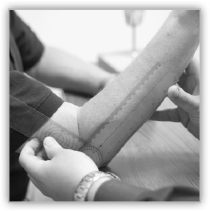
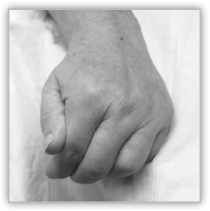

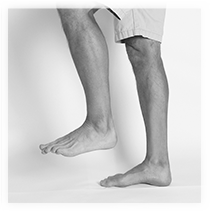
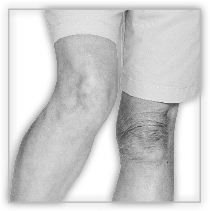


as soon as your loved one shows signs of spasticity, don’t wait!
talk with their doctor right away.
- Picking up objects
- Dressing
- Walking up and down stairs
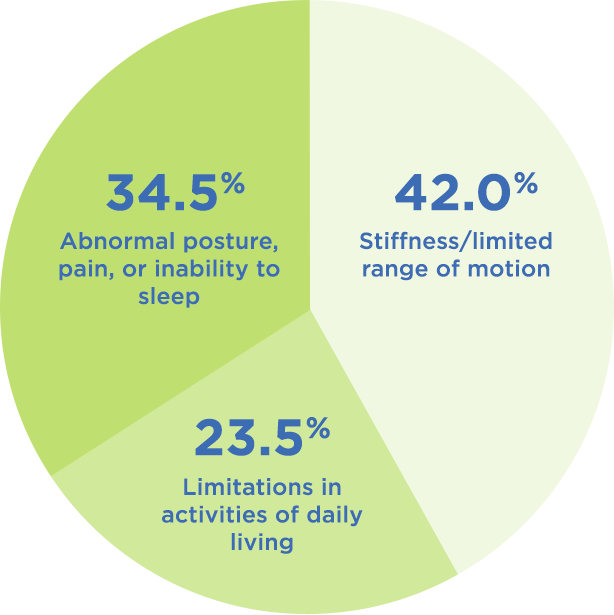
*According to an online survey, percentage of people (N = 810) with spasticity who identified each aspect of their condition as having the most significant impact on their quality of life.
Spasticity affects everyone differently
Be sure to discuss your loved one’s specific problems with their doctor
Spasticity can lead to a range of sensations, from mild muscle stiffness to severe, painful, and uncontrollable muscle spasms. Because of this, it can be difficult to tell whether or not your loved one has spasticity.
In general, if your loved one has any of the following signs and symptoms, they may have spasticity:
- Increased muscle tightness, stiffness, or pain
- Rapid muscle contractions
- Sudden muscle spasms/twitches
- Difficulty using or moving their limbs and joints
getting a spasticity diagnosis is a critical step
in helping your loved one manage their road to recovery.
If your loved one is suffering from symptoms of spasticity, it’s important to talk to their doctor about being evaluated. The doctor may perform several different types of tests to help determine if spasticity is present and how severe it is:
Measure nerve activity and muscle tightness due to spasticity.
Measure how well your loved one’s joints function when a therapist moves them during exercises.
Measure your loved one’s ability to move their limbs and perform daily tasks such as walking, dressing, and hygiene. Functional tests also help the doctor assess your loved one’s pain.
Measure impact of spasticity on different areas of daily living, such as dressing, hygiene, and household tasks.
communication is key
It’s important to talk openly with your loved one and their doctor about spasticity.
–fontessa, caregiver










